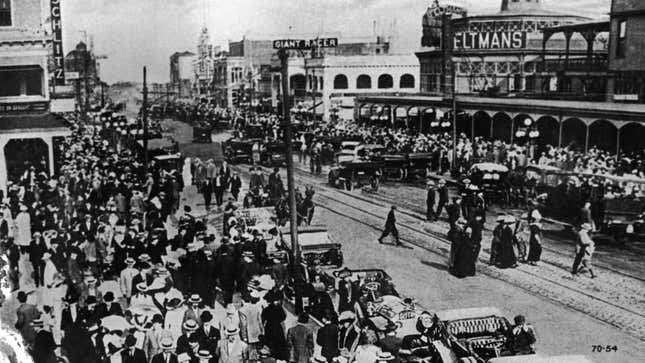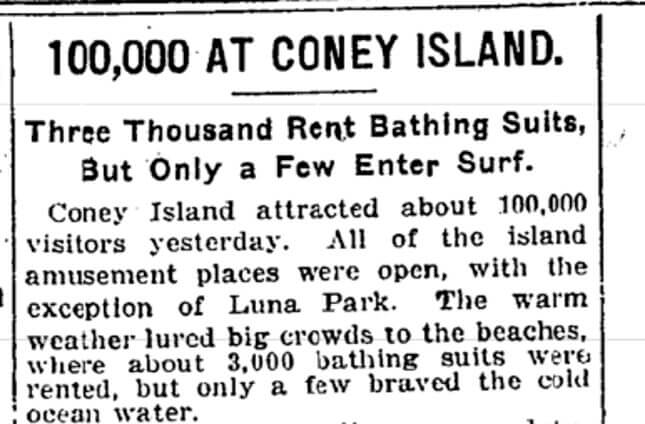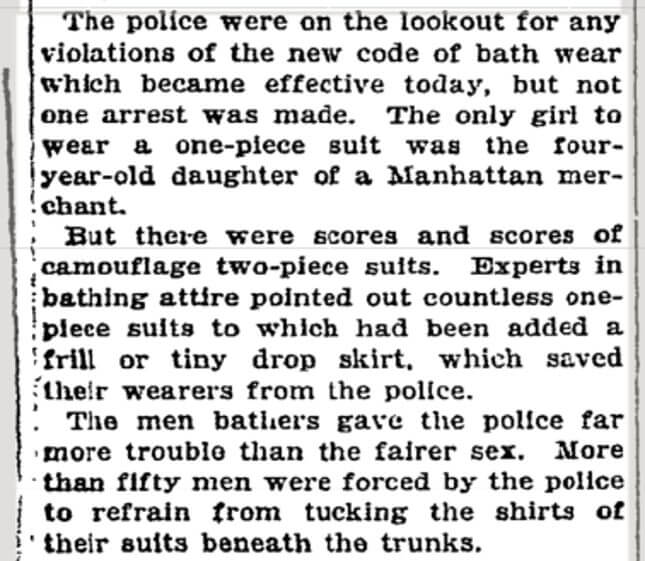Did You Know: Coney Island Visitors Used to Rent Their Bathing Suits
In Depth

Before everyone heads off to the nearest body of water to show off their cute new swim looks, you should know that a century ago, many visitors to Coney Island rented their bathing suits.
I learned this fact recently, while reading Hugh Ryan’s fascinating When Brooklyn Was Queer. Ryan goes into detail about the bathhouses on Coney Island, explaining that they a hybrid of two basic types of the form that emerged in New York City over the course of the 19th century—privately run institutions that catered to the middle and upper classes that functioned almost like social clubs, and municipal offerings that promoted a reformist notion of hygiene among the working class. Ryan wrote:
-

-

-

-

-

-

-

-

-

-

-

-

-

-

-

-

-

-

-

-

-

-

-

-

-

-

-

-

-

-

-

-

-

-

-

-

-

-

-

-










































